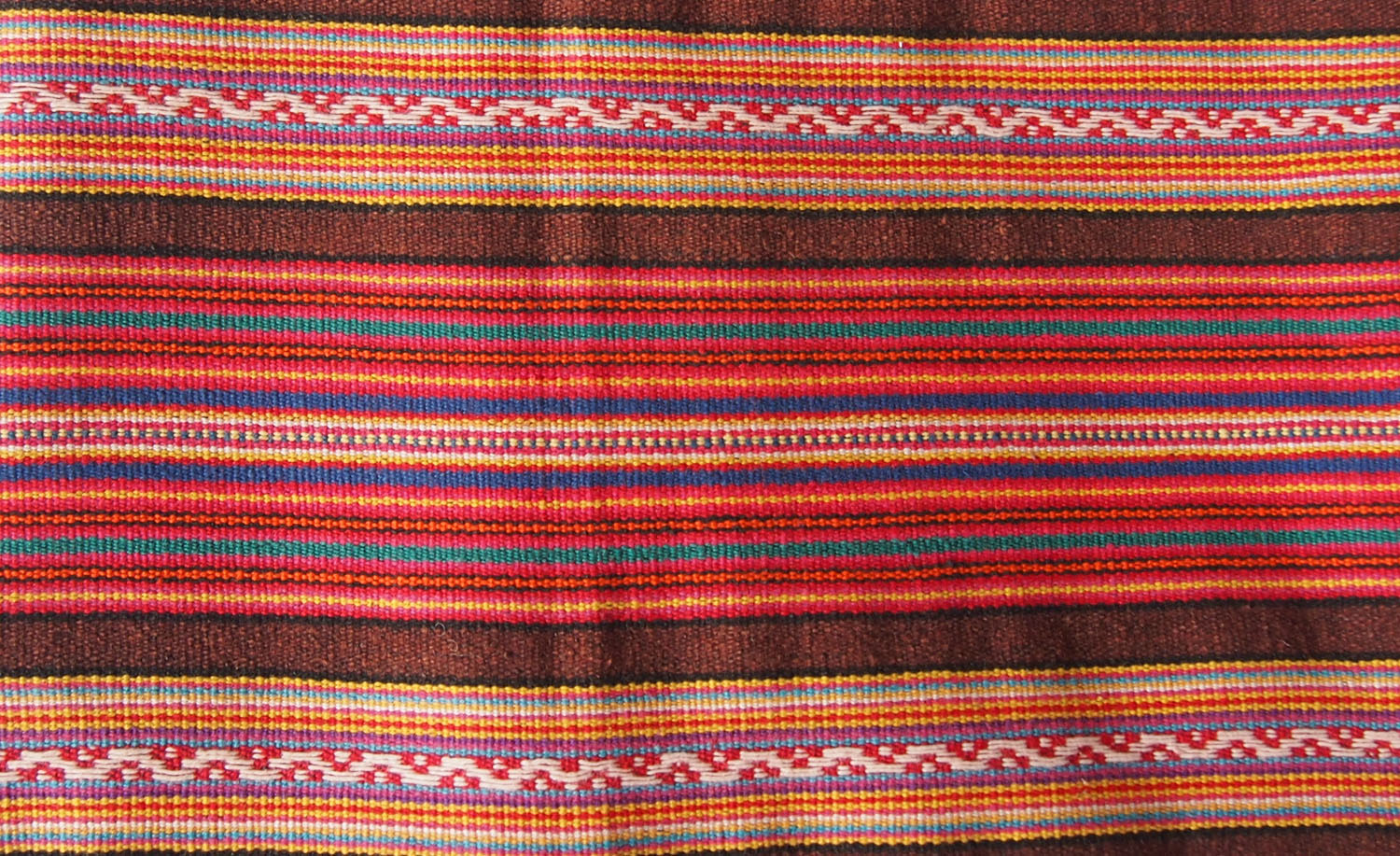Tais Cloth, Timor-Leste
Ceremonial cloth known as tais has been woven in Timor-Leste (East Timor) for generations. After the country gained independence from Indonesia in 1999, tais weaving was rescued from the brink of extinction and once again rose to prominence as a symbol of cultural identity. The designs and colourways used in tais vary from district to district. In Lautem in the country’s far east, tais is mainly woven from cotton on backstrap looms using a combination of plain weave and ikat techniques. A typical tais design is stratified and features layers of colour and texture woven in bands of different widths.
Once off the loom, long, narrow panels are joined with a seam to make feto or mane tais, a full-body wrap-around garment worn during ceremonies by women and men respectively. Modern tais designs include narrow scarves called selendang, and it is becoming increasingly popular to use small lengths of tais to make accessories such as earrings, purses or bags.
Colour is highly symbolic in tais weaving – especially the colours of the Timorese national flag: red for sacrifice and liberation, black for triumph, yellow for the nation’s colonial remnants, and white for the light of peace. The colours chosen for any one cloth depend on the occasion where it will be worn (wedding, funeral). In some villages and co-ops, endemic plants are still used to colour hand-spun cotton; but the increasing availability of polyester fibres and synthetic dyes are changing the way tais is made. Tais cloths are traditionally given by one Timorese woman to another as a mark of respect or symbol of repentance. The growing role of co-ops including Koperativa LO’UD to restore a sense of community for these women, who may otherwise weave in isolation, through creative partnerships and sharing materials and skills. View the full article on The Kindcraft.







